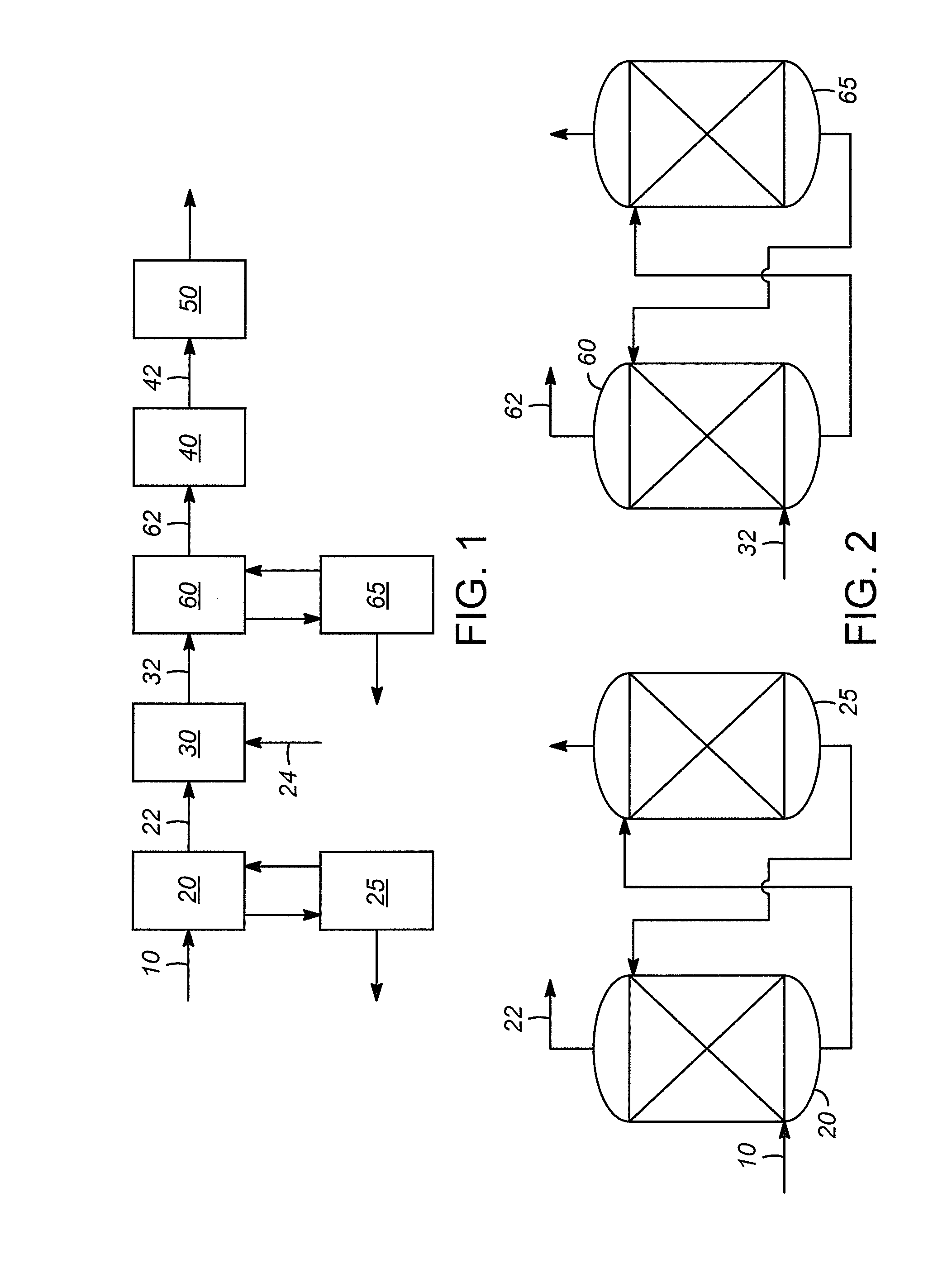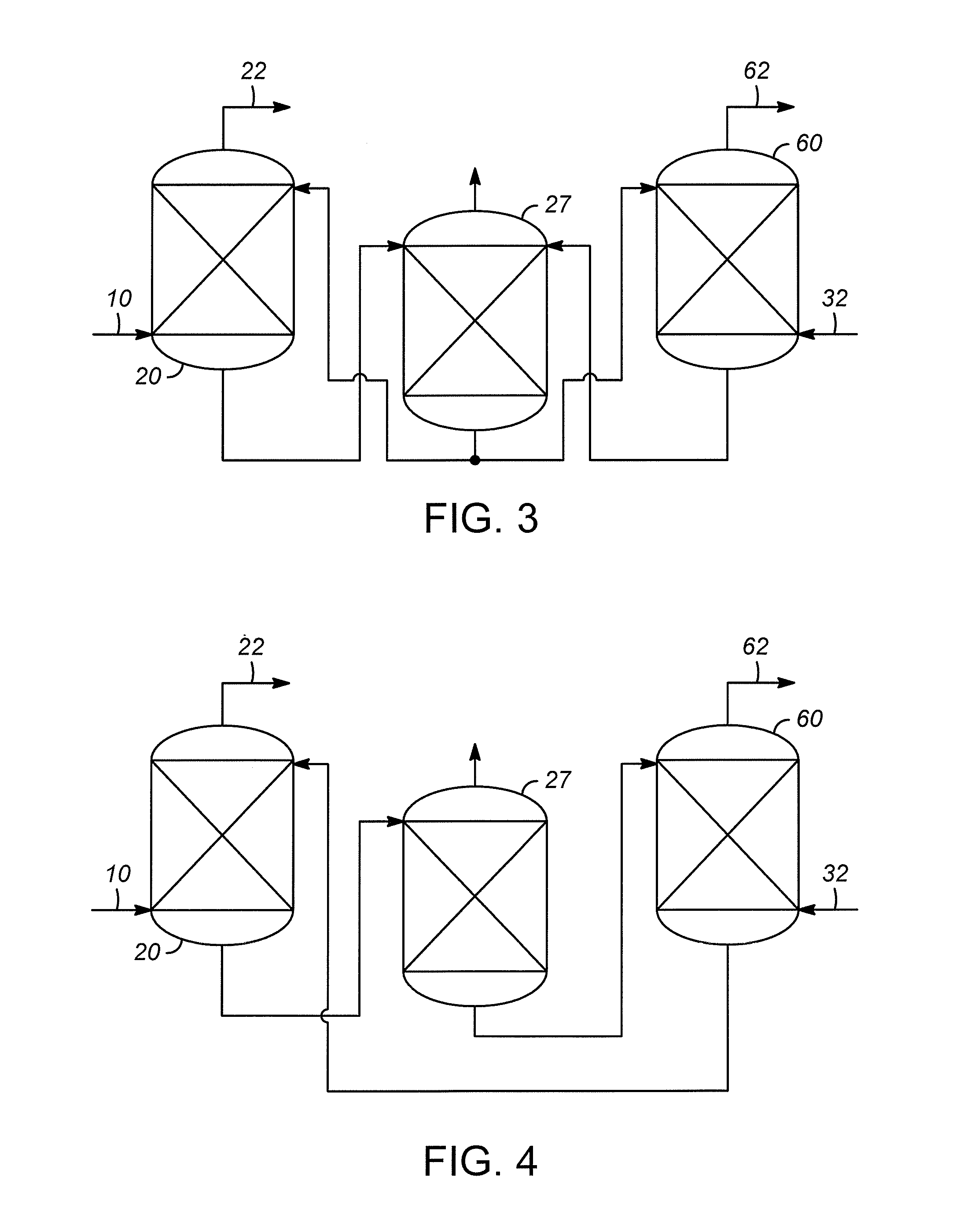Water gas shift for acetylene converter feed co control
a technology of acetylene converter and water gas shift, which is applied in the direction of extraction purification/separation, organic chemistry, chemistry apparatus and processes, etc., can solve the problems of carbon monoxide, and achieve the effect of increasing hydrogen concentration and reducing co concentration
- Summary
- Abstract
- Description
- Claims
- Application Information
AI Technical Summary
Benefits of technology
Problems solved by technology
Method used
Image
Examples
example 1
[0026]The process of the present invention is shown with out water addition to the water gas shift reactor. The results are shown in Table 1. The water gas shift reaction conditions were a temperature of 232° C. (450° F.) and 1700 kPa (246.7 psia).
Stream “A”MoleStream “B”FractionMole %Mole FractionMole %H2O0.0038930.3893H2O0.0025250.2525Nitrogen0.0637676.3767Nitrogen0.0637676.3767Hydrogen0.10729310.7293Hydrogen0.10866010.8660CO0.0026320.2632CO0.0012640.1264CO20.0000050.0005CO20.0013730.1373Methane0.25001325.0013Methane0.25001325.0013Acetylene0.0005060.0506Acetylene0.0005060.0506Ethylene0.48889148.8891Ethylene0.48889148.8891Ethane0.0769277.6927Ethane0.0769277.6927Propylene0.0060730.6073Propylene0.0060730.6073
[0027]Stream “A” is the feed stream 22 entering the water gas shift reactor, and stream “B” is the effluent stream 32 exiting the water gas shift reactor.
example 2
[0028]The process was also run with water added to the water gas shift reactor. The reaction conditions of temperature and pressure were the same as in Example 1.
Stream “A”MoleStream “B”FractionMole %Mole FractionMole %H2O0.0098430.9843H2O0.0078280.7828Nitrogen0.0633866.3386Nitrogen0.0633866.3386Hydrogen0.10665210.6652Hydrogen0.10866710.8667CO0.0026160.2616CO0.0006000.0600CO20.0000050.0005CO20.0020210.2021Methane0.24851924.8519Methane0.24851924.8519Acetylene0.0005030.0503Acetylene0.0005030.0503Ethylene0.48597148.5971Ethylene0.48597148.5971Ethane0.0764677.6467Ethane0.0764677.6467Propylene0.0060370.6037Propylene0.0060370.6037
[0029]Although the water gas shift reaction reduced the CO content by more than 50%, there was still CO that could be removed. The use of additional water passed to the water gas shift reactor reduced the CO concentration by more than 75% of the CO in the gas stream 22 entering the water gas shift reactor.
PUM
| Property | Measurement | Unit |
|---|---|---|
| temperature | aaaaa | aaaaa |
| temperature | aaaaa | aaaaa |
| temperature | aaaaa | aaaaa |
Abstract
Description
Claims
Application Information
 Login to View More
Login to View More - R&D
- Intellectual Property
- Life Sciences
- Materials
- Tech Scout
- Unparalleled Data Quality
- Higher Quality Content
- 60% Fewer Hallucinations
Browse by: Latest US Patents, China's latest patents, Technical Efficacy Thesaurus, Application Domain, Technology Topic, Popular Technical Reports.
© 2025 PatSnap. All rights reserved.Legal|Privacy policy|Modern Slavery Act Transparency Statement|Sitemap|About US| Contact US: help@patsnap.com


